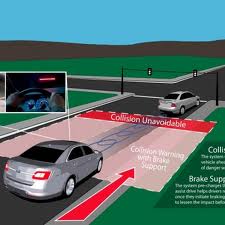In the search for the perfect heart, and other body parts that don’t expire, break down, or cause severe blood clots. Scientist from Texas Heart Institute said they have developed a new type of machine that can work %100 effective by using simple whirling rotors.
I’ve always had the fantasy of having a heart that doesn’t expire, a liver and kidney that can filter enough alcohol to make Russia proud, and the list of organs goes on and on.
Dr. Billy Cohn, and Dr. Bud Frazier are the two researchers credited with this breakthrough in medical advancements. They used an 8 month old calf they called Abigail, and they implanted a pair of centrifugal pumps, they added similar pumps to several other calves just to make sure they have the transplant down for human trials.
The whole purpose of having a heart is to tell doctors when you are alive, or you are dead thanks to what we call a pulse. Without a pulse, you quickly end up in a black bag, if you get placed in the bag, have no pulse, and start moving again, then you are a zombie, and that’s not good for anyone.
Dr. Cohn, and Dr. Frazier said, “If you listened to her chest [calf] with a stethoscope, you wouldn’t hear a heartbeat,” says Cohn. “If you examined her arteries, there’s no pulse. If you hooked her up to an EKG, she’d be flat-lined.”
The pumps spin Abigail’s blood and move it through her body.
“By every metric we have to analyze patients, she’s not living,” Cohn says. “But here you can see she’s a vigorous, happy, playful calf licking my hand.”
About 38 calves later, Dr. Cohn, and Frazier, felt they had enough practice to take this to a new level, they picked Craig Lewis, a 55 year old man who’s heart had 12 Hours left to live due to amyloidosis, it causes a severe buildup of abnormal proteins and eventually they clog organs so much that they just stop working.
This is amazing, it was the first time that anyone ever received the artificial heart, Craig made a fair recovery, shortly after the operation he tried to get up, on his fee, but he quickly began to pass out due to his other organs failing. Unfortunately, one month after the operation, Craig lost his life due to his other organs failing.
Linda, Craig’s wife, said that she didn’t want to lose him, she wanted him to get the heart so he could stay in her life, after the operation, all she remembers was putting her head on his chest and “hearing nothing but a humming sound, which was amazing, he didn’t have a pulse” and he was still alive.
Even though this was not a success for Craig and his family, it’s a victory for the medical field, prior heart pumps worked the same way as human hearts, they had a beating pulse, the blood circulated the body by a series of pumps. Eventually the pumps failed, caused blood clots, and even put the life of the patient in extreme danger. Scientist copied the human heart because it “worked” for nature.
But sometimes what works for nature doesn’t work in the “robotic” or “mechanical” field. An example is the ability to fly, when humans first tried to learn how to fly, they copied Bats, Birds, Eagles, Bugs, etc. Every airplane design had flapping wings. Eventually scientist figured out that there was a better way, “When they saw that you could create wind, and that wind over a fixed wing was a great way to provide lift, then the whole field shifted,” Cohn says. “There are very few flying machines in modern times that have flapping wings. And I think this is the same intellectual leap in pumping blood or pumping fluids.”
The FDA still has to approve this technology, but from the looks of it, it looks like this is going to be the next big breakthrough in heart transplant technology.
Via: NPR





